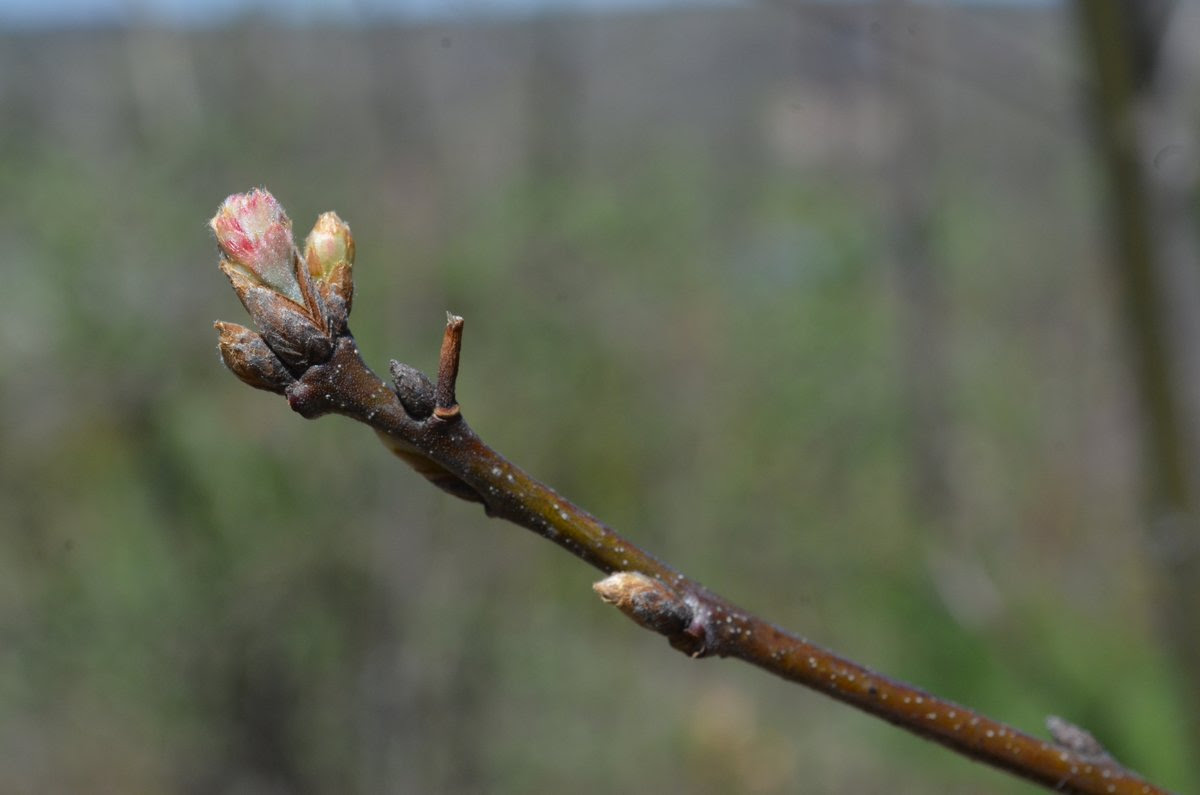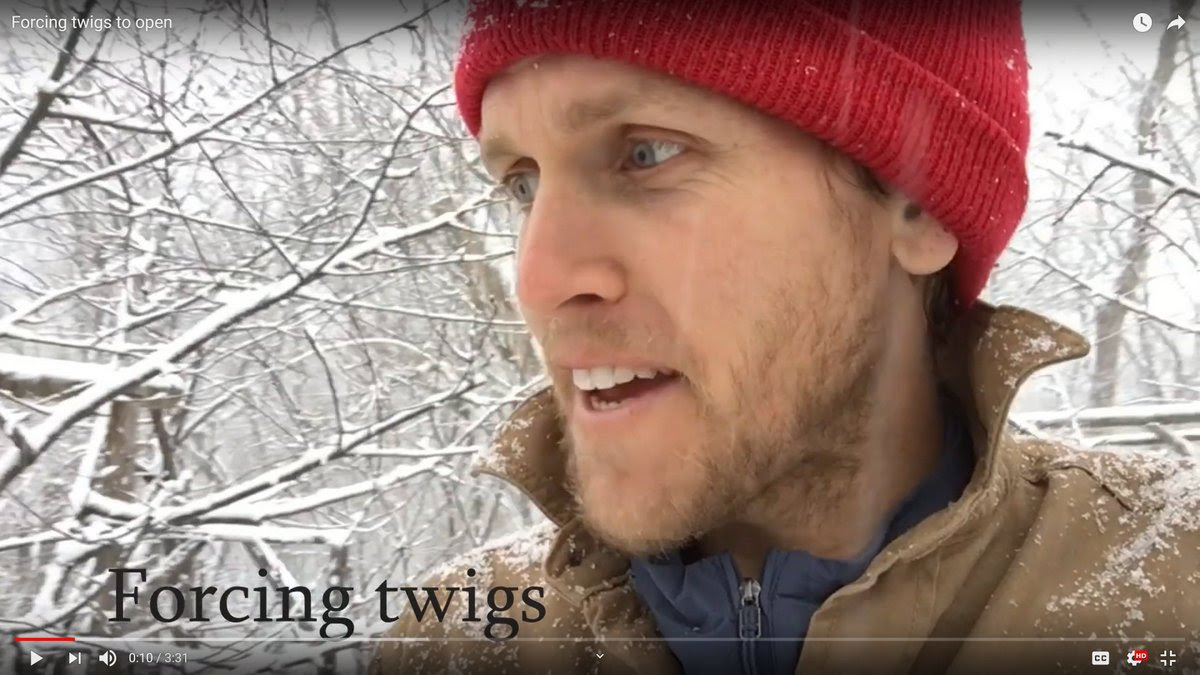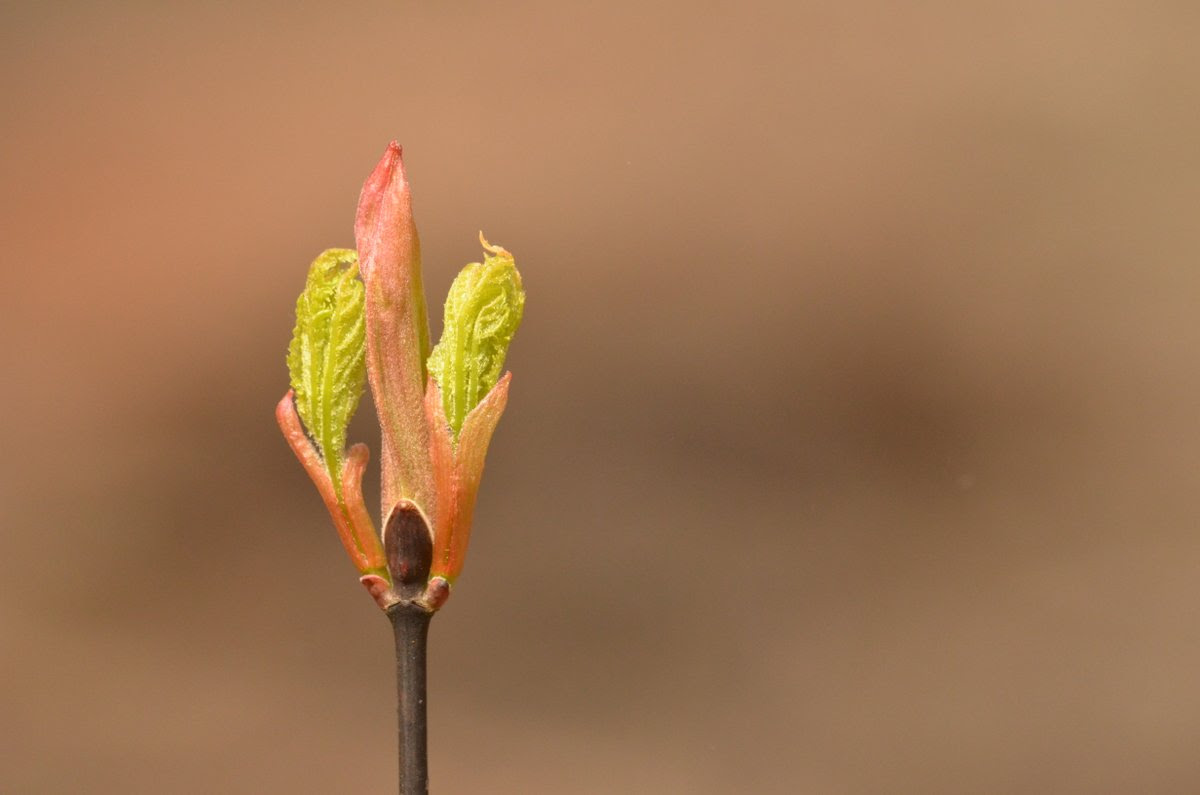
Issue #2.03.e | Some things to do (Part 1)
I was going to press on with my series on conifer ID, but it felt like I was pretending that all was normal in the world, and it’s anything but normal these days (but fear not, I’ll pick up with it in a couple weeks). There’s an overwhelming deluge of information on covid-19 flooding my inbox daily, and I thought that rather than expand on conifer minutiae or add to this by writing a naturalist’s perspective on the pandemic, I’d offer you a reprieve from the overwhelming burden of staying informed by giving you a few simple ideas to engage and interact with the natural world while in self-isolation mode.
~ Teage

Activity #1: Forcing buds
Spring is here. Or so I wrote a few hours ago before it started to snow…and snow…and snow. Certainly, the first signs of spring – return of red-winged blackbirds & grackles, Siberian squill flowers are emerging, red maple flower buds are swelling – have already made themselves wonderfully known, hinting that the Great Greening of our forests is just around the corner.
Timing bud burst
But that’s just the thing with spring, you never quite know when it’s here here. And neither do the plants, which is a problem because winter can be deadly. For each tree, accurately calibrating its clock to time bud burst just right is key to ensure not just its survival, but also that it has enough energy to produce flowers and fruits. Trees need to get their green solar panels out in the sun before other trees can shade them out, but they need to wait until after the fear of the last harsh frost. Each tree performs its own internal calculus, weighing its short term photosynthetic needs against the risk of losing a crop of leaves. Slow and steady or fast and hard? For things in the understory, the risk is greater – if they wait too long the overstory trees might leaf out and shade them out in that critical period in April/May when sun hits the forest floor.

Fortunately you don’t have to wait until late April/May to see those delightful lime green leaves of beech splitting forth from the bud. By “forcing” buds you can get a head start on seeing green. Effectively, what you’re doing is simulating an early arrival to spring, tricking the plant into breaking bud and shooting out its set of leaves. Here’s how:
Recipe for forcing buds
- Cut a 8-12″ section of a twig at a 45 degree angle
- Getting a twig with flower buds is a great idea (typically the flower buds are larger than the vegetative buds)
- Put it in a cup
- Pour in about an inch or two of water (check daily to make sure the bottom of the twig is submerged)
- Store in a warm, sunny spot
- Wait!
Depending on the species, you can start to see results in a couple of weeks! Not that it needs much explanation, but thought I’d put together a quick video on the process:


1. Make it a science
Bud burst is a behavior only partly mediated by genes. Plants are responding to cold temperatures in the winter (twigs need to be exposed to X number of weeks of sub-freezing temperatures – typically 6-8 for species in the northeast – before they can be forced to burst open). By experimenting with forcing twigs we can start to tease out what specific external cues a tree is responding to in its environment.
Each step of our process above has variables that we can manipulate to test the relative importance in determining leaf out timing. Here are some modifications you can make to upgrade your leaf out observations into a full-blown experiment:
- Species: Try a bunch of different species to see which ones leaf out first. You can then start to piece together patterns: which groups leaf out earlier – conifers/broad-leaf trees, understory/overstory species, thick twigs/thin twigs, ring-porous/diffuse-porous species, determinate/indeterminate growth, etc.
- Sunlight: Does exposing a twig to sunlight affect when/if it leafs out?
- Temperature: Put some twigs outside your door or in the refrigerator and some next to your thermostat, just don’t let the water freeze.
- Water: Sap flow draws sugar and minerals up the trunk to the buds. Try putting sugar water in one, tums in another, or anything else you want.
- Oxygen: Plants need oxygen to fuel the early growth of their leaves (check the image below), so try putting your twigs/cup setup in a bag to limit the oxygen supply
And you can probably think of another 5 variables to tweak. Once you start to find differences in leaf out times then you can start to answer the really interesting question: why?
Good luck, and let me know how it goes!

Some Resources on Twigs
- My guide to all things twigs: link
Thanks for reading, and please consider supporting this newsletter on Patreon.
And don’t forget to check the archives for back issues.
Got an idea for a future newsletter, shoot me an email!
Instagram | Facebook | Website
Copyright © 2020 Phyllotaxy, All rights reserved.
Our mailing address is:
Phyllotaxy, 56 Latham Ct, Burlington, VT 05401-1522


